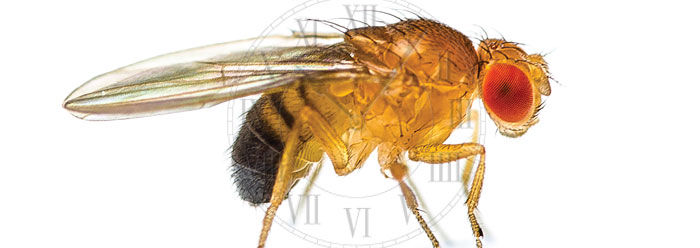Life could not exist without organisms’ engineered ability to keep track of time on a 24-hour day-night cycle called a circadian rhythm. Even sophisticated electronic machines such as computers or microcontrollers have a central clock or an oscillator. This critical design feature must be in place for complex systems to work on a schedule, interface with other system components, and interact with the environment.
The circadian clocks in plants and animals are far more advanced than those in man-made systems. These living clocks regulate many aspects of genetics, metabolism, physiology, growth, and behavior in numerous types of cells and tissues throughout the entire organism.1,2 In fact, animals typically have not only a centralized circadian clock in their brain but also many peripheral clocks in different tissues and organs. These peripheral clocks regulate temporal and spatial organization and physiology in whatever cell, tissue, or organ they are located, and they also keep systems in sync with the central clock in the brain. Clearly, a complex cellular communication network connects tissues and body parts within a time-based context—a phenomenon that still isn’t fully understood.
Because biological networks in plants and larger animals are so complicated, such systems are best studied in “simpler” organisms like fruit flies. A number of key regulatory gene families at the apex of circadian rhythm control—given clever names like CLOCK, CYCLE, PERIOD, and TIMELESS—have been found to play major roles in cellular system oscillation.1,2 These genes produce proteins called transcription factors that act as master switches in the genome, turning on other genes in a hierarchical, highly coordinated fashion. In fact, several of these genes produce proteins that are also responsive to light, modulating their function in the cell according to external light intensity and the type of light (e.g., blue light). Perhaps the most amazing thing is that the specific functions of these “peripheral clock” genes vary depending on the type of tissue the cell resides in, yet its localized systems still keep in overall sync with the organism’s central clock.
Not even electronic devices exhibit this level of dynamic complexity, with numerous circadian clocks interactively communicating across networks of tissues as well as within the same tissue.
This level of interconnectivity and complexity is essentially impossible for humans to comprehend and unravel, yet its existence is unscientifically ascribed to the random processes of evolution. An internetworked and interdependent system like this is an excellent example of irreducible complexity, specifically the myriad of components that must be in place all at once for it to work.
Appealing to evolution to develop this vast complexity through random mutations and alleged selective pressures bit by bit is absurd. Only a masterful, omnipotent Engineer could have put such a fantastic and orchestrated system as this into place—not just once but in thousands of uniquely created kinds of plants and animals. The more we understand about the genetics of living things, the more glory we should give their Creator.
References
- Ito, C. and K. Tomioka. 2016. Heterogeneity of the Peripheral Circadian Systems in Drosophila melanogaster: A Review. Frontiers in Physiology. 7 (8).
- Tataroglu, O. and P. Emery. 2015. The molecular ticks of the Drosophila circadian clock. Current Opinion in Insect Science. 7: 51–57.
* Dr. Tomkins is Director of Life Sciences at the Institute for Creation Research and received his Ph.D. in genetics from Clemson University.


















